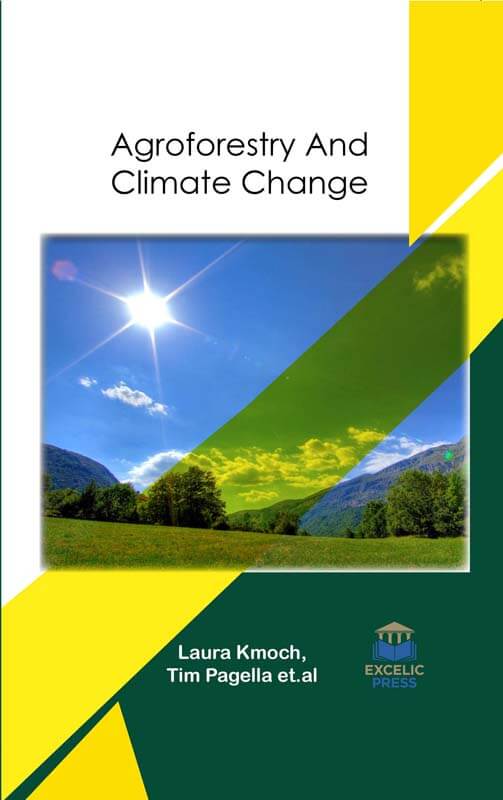Over the past decade, the potential of agroforestry systems to sequester carbon and their role in providing ecosystem services has become the forefront of research as a result of global climate change. Agroforestry systems are unique because they are a land management practice that simultaneously addresses biophysical, economical, and socio-ecological components. Such diversity and interactions lead to a greater functional and structural complexity compared to conventional agroecosystems. Agroforestry, that unambiguously integrates trees into land-use systems, has traditionally contributed to global climate change adaptation. Hence, the promotion of Agroforestry is vitally vital to reinforce the resiliency of the country to future global climate change.
Agroforestry and Climate Change provides wide-ranging coverage of comprehensive information on emerging eco-friendly technology and its prospective role in contesting climate change through agroforestry. The book starts with highlights three ways agroforestry can be part of a climate change response: adapt to increased risks and uncertainties, facilitate an energy transition, and restoring landscape multifunctionality to allow current human resource appropriation to become sustainable, fitting sustainable development goals within planetary boundaries. Next, this book covers a study that presents how to use local agroecological knowledge in climate change adaptation.
Further, this book presents a literature review to shed light on the social, environmental and economic benefits and challenges of using agroforestry systems for the purposes of conservation and restoration. The book also focuses on – carbon revenue in the profitability of agroforestry relative to monocultures; carbon sequestration potential of agroforestry systems in India; estimating carbon storage in windbreak trees on U.S. agricultural lands; agroforestry practices and carbon sequestration cost estimates among forest land-dependent households in Nigeria; and reducing subsistence farmers’ vulnerability to climate change: evaluating the potential contributions of agroforestry in western Kenya.
Additionally, the book reviews the literature and discusses the adverse impacts of climate change on agriculture and forestry, the effects of adopting agroforestry on climate changes, and important policies for promoting agroforestry adaptation. Climate change may significantly reduce the productivity of farms globally. Throughout the tropics, the effects of changes in temperature and precipitation patterns are predicted to be particularly negative with declines of crop yields, increased environmental suitability of agricultural pests and diseases and decreasing livestock pasture (feed) quality. The potential impact of climate change on farm productivity is a significant concern given that agriculture represents the primary livelihood strategy for the vast majority of rural poor in tropical developing countries. In the last, therefore, this book presents the contribution of agroforestry to climate change mitigation and livelihoods in developing countries.














Laurene –
Hello! Do you know if they make any plugins to assist with SEO?
I’m trying to get my site to rank for some targeted keywords but I’m not
seeing very good results. If you know of any please share.
Many thanks! You can read similar blog here: Your destiny